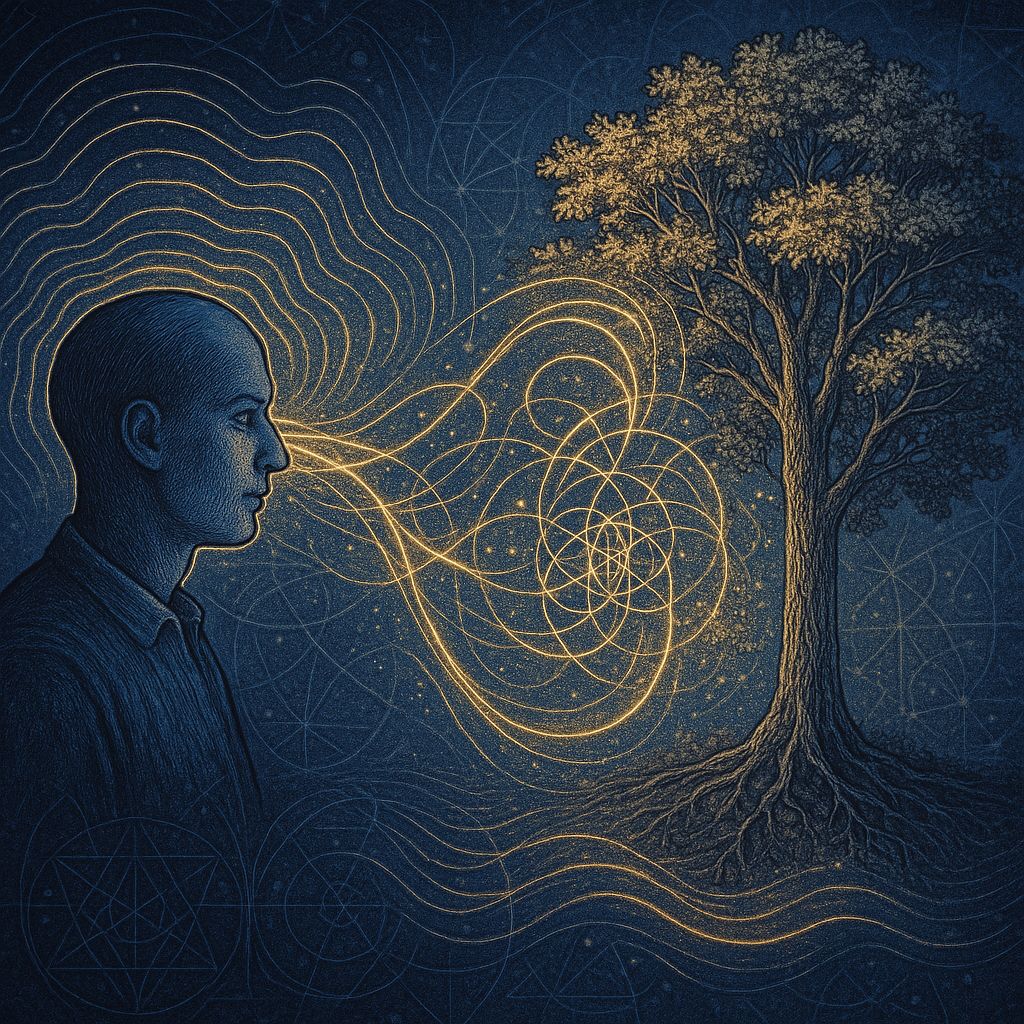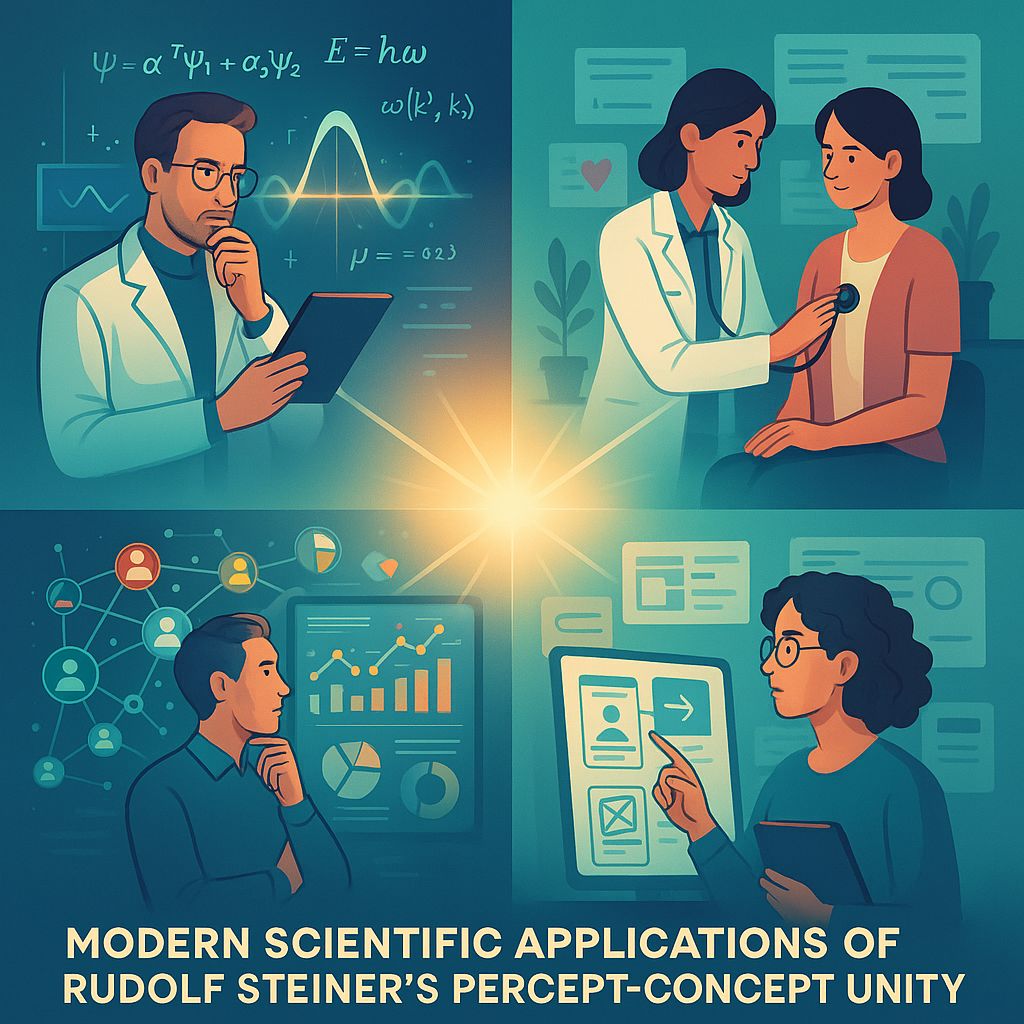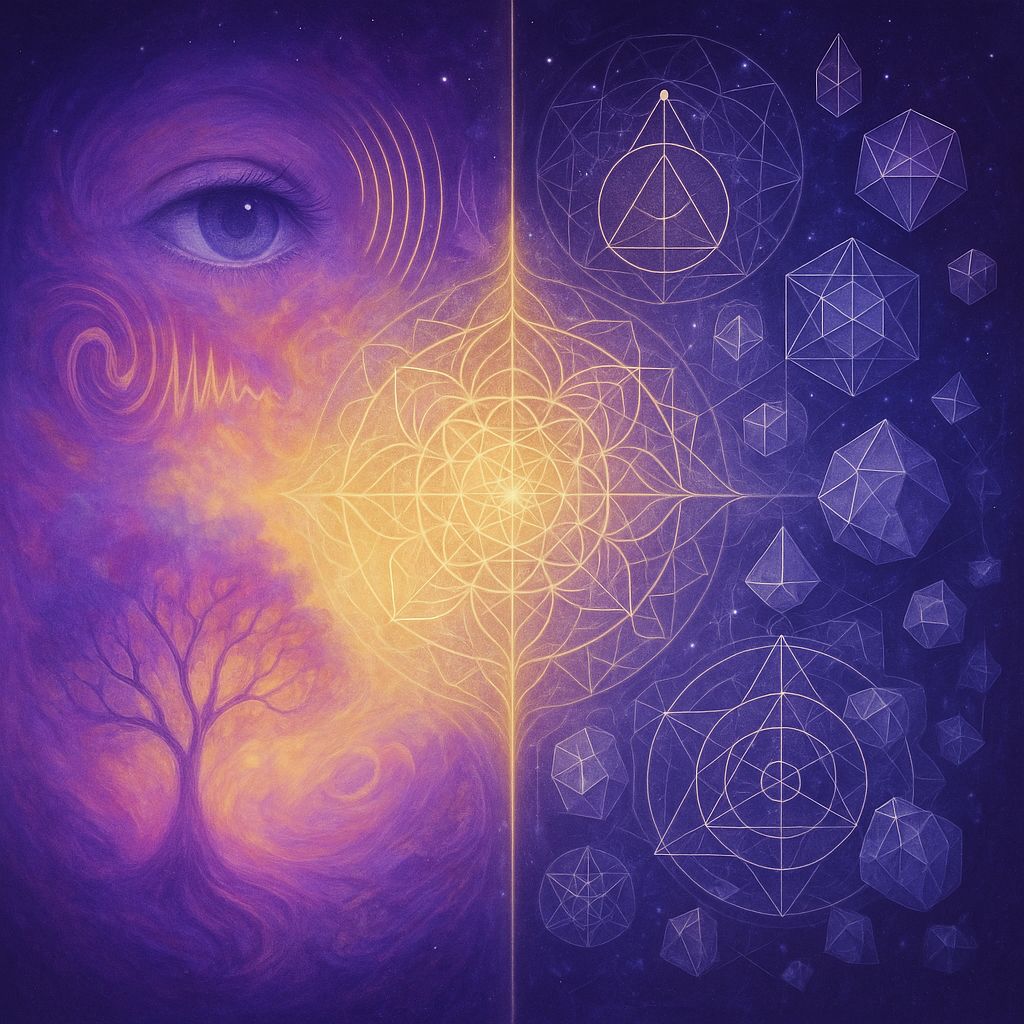Quick Answer
Rudolf Steiner (1861-1925) founded anthroposophy and spiritual science. His work spans consciousness development, education (Waldorf), agriculture (biodynamic), medicine, and social reform.
Core teaching: Systematic development of spiritual perception through phenomenological observation and specific exercises.
In This Article
- Steiner's Core Claims About Knowledge
- The Core Formula: Percept + Concept = Complete Reality
- Modern Scientific Validation
- Practical Applications: Living the Unity
- The Deeper Implications: Consciousness and Reality
- Common Misunderstandings Clarified
- The Path Forward: Living Conscious Participation
- FAQ: Understanding Chapter 5
The Hidden Unity of Perception and Thinking
Ever find yourself pondering why a tree is just colors until the moment you consciously think "tree?" Maybe the greatest philosophical puzzle - how our minds connect to the material world - is actually hidden within the simple act of knowing.
For millennia, philosophy has grappled with this mind-matter divide. But Steiner's Chapter 5 proposes a solution so remarkable, it almost upends our understanding. The secret isn't just perception or thought on its own, but their living, unified relationship.
Rudolf Steiner's "The Act of Knowing the World": Where Perception Meets Concept
Chapter 5 of The Philosophy of Freedom might just contain Steiner's most foundational breakthrough: the formula that dissolves the ancient mind-matter dualism. Building on Chapter 3's notion of thinking as observable spiritual activity, Chapter 5 illustrates how thinking and perception unite to form our complete sense of reality.
This isn't purely abstract - it's a foundation for understanding consciousness itself, with implications in fields as diverse as quantum physics, holistic medicine, and systems thinking; really, in any area where the observer and the observed intersect.
Steiner's Core Claims About Knowledge
| Traditional Dualism | Steiner's Monism | Modern Parallel |
|---|---|---|
| Mind and matter are separate realms | Perception and concept unite in the act of knowing | Quantum: Observer and observed are inseparable |
| Knowledge is either subjective or objective | Knowledge arises from the marriage of both | Systems thinking: Parts only understood in relation to whole |
| Reality exists "out there" independently | Reality completes itself through human cognition | Participatory universe in physics |
| We can never truly know things-in-themselves | We complete reality through knowing | Holistic medicine: Symptoms + understanding = healing |

Visualization of how perception and concept unite in the act of knowing, creating complete reality
The Core Formula: Percept + Concept = Complete Reality
Understanding Steiner's Terms
Percept: Any element given to observation—colors, sounds, feelings, even thoughts once they're completed
Concept: The universal element grasped through thinking that gives meaning to percepts
Reality: Neither percept alone nor concept alone, but their synthesis in the act of knowing
Steiner uses a masterful example to illustrate this: When you see a red rose, the redness (percept) and the concept "red" exist separately until thinking unites them. The percept is individual and transient; the concept is universal and eternal. Reality emerges when these two streams meet in consciousness.
Why This Matters: The Philosophical Revolution
For centuries, philosophers have been trapped in false dilemmas:
- Is reality material or spiritual?
- Is knowledge subjective or objective?
- Can we ever truly know the "thing-in-itself"?
Steiner dissolves these problems by showing they arise from artificially separating what is naturally united. The act of knowing isn't about bridging two separate worlds—it's about recognizing their essential unity.
Get Weekly Consciousness Insights
Join thousands receiving sacred wisdom, practical exercises, and exclusive content.
Subscribe FreeNo spam. Unsubscribe anytime.
Modern Scientific Validation
1. Quantum Physics: The Observer Effect
Just as Steiner showed that reality completes itself through observation combined with thinking, quantum mechanics reveals that the act of measurement determines quantum states. The observer isn't separate from the observed—they form a unified system.
Werner Heisenberg's uncertainty principle and the Copenhagen interpretation echo Steiner's insight: "Intuition is for thinking what observation is for percept". Both are necessary for complete knowledge.
2. Systems Thinking: Beyond Reductionism
Modern systems theory has discovered what Steiner articulated: understanding emerges from grasping relationships, not isolated parts. A system's behavior can't be predicted from its components alone—it requires comprehending the organizing concept that unites them.
Systems Thinking in Action
- Business: Data (percepts) + Strategic vision (concepts) = Effective decisions
- Ecology: Observations + Ecosystem principles = Environmental understanding
- Education: Student behavior + Developmental concepts = Effective teaching
3. Holistic Medicine: Treating the Whole Person
The revolution in integrative medicine directly parallels Steiner's epistemology. Modern integrative medicine recognizes that treating symptoms (percepts) without understanding the whole person (concepts) leads to incomplete healing.

Four modern fields applying Steiner's percept-concept unity principle
Practical Applications: Living the Unity
Understanding percept-concept unity isn't just philosophical—it transforms how we approach every aspect of life. When we recognize that complete reality emerges from uniting observation with understanding, we become conscious participants in creating the world we experience.
In Daily Life: The Art of Complete Knowing
Consider how this applies to relationships: Observing someone's behavior (percept) without grasping their inner life (concept) gives only surface knowledge. Conversely, having theories about people without careful observation leads to projection. True understanding emerges when empathetic observation meets conceptual insight.
Exercise: Experiencing Percept-Concept Unity
- Choose any object in your environment
- First, observe it without naming or categorizing—pure perception
- Notice how incomplete this feels, how it lacks meaning
- Now allow the concept to arise—what it is, its purpose, its nature
- Experience how perception and concept unite into complete knowledge
- Recognize: You just participated in creating reality!
In Professional Fields: Integration in Practice
| Field | Percepts | Concepts | Unity in Practice |
|---|---|---|---|
| Scientific Research | Experimental data | Theoretical frameworks | Scientific understanding |
| Psychotherapy | Client's experiences | Psychological principles | Therapeutic insight |
| Art & Design | Visual elements | Design principles | Meaningful creation |
| Education | Student responses | Learning theories | Effective pedagogy |
The Deeper Implications: Consciousness and Reality
Key Insight
If reality completes itself through the unity of percept and concept in human consciousness, then consciousness isn't separate from the world—it's how the world becomes fully real.
This has staggering implications:
- We are not passive observers of a ready-made world, but active participants in reality's completion
- The universe needs human consciousness to achieve its full reality—we're not accidents but necessities
- Every act of knowing is creative—we don't just discover truth, we help create it
- The split between subjective and objective is an illusion created by incomplete thinking
Connecting to Quantum Consciousness
Modern discussions of quantum consciousness often struggle with how mind and quantum processes relate. Steiner's framework provides clarity: consciousness doesn't mysteriously "collapse" wave functions—rather, the act of observation (percept) united with understanding (concept) is how quantum potentials become actual realities.
Common Misunderstandings Clarified
What Steiner Is NOT Saying
- ❌ Reality is "just" subjective or created by individual minds
- ❌ The physical world doesn't exist without human observation
- ❌ Concepts are mere human constructions
- ❌ We can know everything through thinking alone
What Steiner IS Saying
- ✓ Reality reaches completion through the unity of percept and concept
- ✓ The world exists but achieves full reality through consciousness
- ✓ Concepts are objective realities grasped through thinking
- ✓ Complete knowledge requires both observation AND thinking
The Path Forward: Living Conscious Participation
Understanding Chapter 5 transforms how we engage with the world. We're neither trapped in subjective bubbles nor confronting an alien objective reality. Instead, we're participants in the world's self-realization through conscious knowing.
Daily Practice: Conscious Knowing
Throughout your day, practice recognizing moments when percept and concept unite:
- When you understand someone's words (sound percepts + meaning concepts)
- When you recognize a pattern (visual percepts + organizing concepts)
- When you grasp a situation (multiple percepts + contextual concepts)
Each time, appreciate that you're participating in reality's completion!
FAQ: Understanding Chapter 5
Frequently Asked Questions
What does "percept + concept = reality" actually mean?
It means complete reality isn't found in raw sensory experience alone (percepts) or in abstract thinking alone (concepts), but emerges when these unite in the act of knowing. When you see a tree and think "tree," reality completes itself through this unity.
How does this relate to the observer effect in quantum physics?
Both reveal that observation and understanding can't be separated from what's being observed. In quantum physics, measurement affects the system; in Steiner's epistemology, the act of knowing completes reality. Both point to the participatory nature of consciousness.
Does this mean reality is subjective or "all in our heads"?
No. Steiner shows that both percepts and concepts have objective reality. Percepts come from the world; concepts are universal truths grasped through thinking. Their unity creates complete objective-subjective reality, transcending this false dichotomy.
How can I apply this understanding practically?
Recognize that true understanding in any area—relationships, work, creativity—requires both careful observation and conceptual insight. Don't settle for surface appearances or abstract theories alone. Seek the living unity where perception meets understanding.
Why is this chapter considered philosophically foundational?
It solves the 2,000-year-old mind-body problem without resorting to dualism or reductionism. By showing how reality completes itself through the unity of percept and concept, Steiner provides a monism that includes both consciousness and world as aspects of one reality.
More from Philosophy of Freedom
This article is part of our comprehensive guide. Explore more:
📚 Complete Philosophy of Freedom Guide Chapter 3: Thinking as Spiritual Activity Chapter 5: The Act of Knowing ✓ Chapter 9: Ethical Individualism → Chapter 12: Moral ImaginationYou Are Reality's Co-Creator
Every time you unite perception with understanding, you're not just learning about reality—you're participating in its completion. This isn't mere philosophy; it's recognition of your essential role in the universe's self-realization. Through conscious knowing, you help the world achieve its full truth. What will you help bring to completion today?


